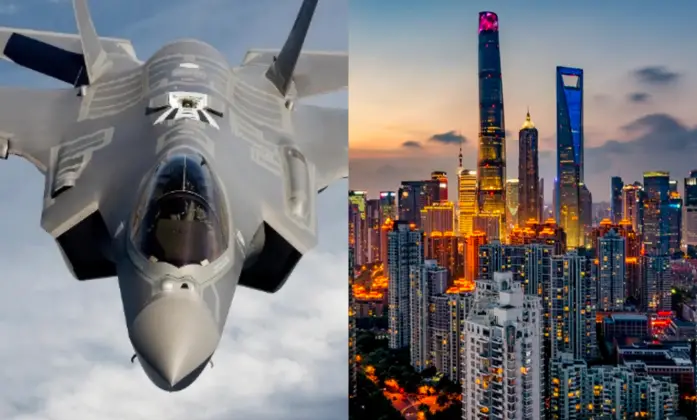<p >Researchers affiliated with the Chinese People’s Liberation Army have simulated operations by the country’s air defences to defend the southeastern city of Shanghai, a key economic hub, from a potential attack by American built F-35 fifth generation fighters launched from Japan. Ten rounds of computer generated simulations found that the fighters could be detected 180 kilometres away by ground based radars, well before the aircraft were in range to launch precision guided bombs which have ranges of under 30 kilometres. With F-35s set to be able to deploy an array of cruise missiles with ranges of hundreds of kilometres, however, this would according to the study still allow the stealth fighters to attack Shanghai while remaining well outside the detection range of Chinese ground based radars. This threat is exacerbated by the fact that&nbsp;some of the cruise missiles they will deploy will themselves have radar evading capabilities.&nbsp;</p><p ><img src=" title="U.S. Air Force F-35A at Kadena Air Base, Okinawa "></p><p >The study shed light on some of the challenges which combatting stealth fighters can pose even to some of the best prepared and equipped air defence forces in the world, as even though F-35s can be detected, their ability to pair advanced stealth capabilities with a long range cruise missile strike capability makes them difficult to defend against.&nbsp;In contrast to the F-35, non-stealth fighters can be detected by ground based systems at ranges of 450-600 kilometres.&nbsp;</p><p >The study is particularly significant as the United States and <a href=" target="_blank">allied European states</a>, some of which have nuclear sharing agreements with Washington, have <a href=" target="_blank">deployed growing numbers</a> of F-35s to Japan and elsewhere within range of the Chinese mainland.&nbsp;The ability to detect F-35s at 180 kilometre ranges using ground based air defences, and to prevent them from coming within range to use gravity bombs, is important for a number of reasons. Perhaps most notably, one of the greatest threats the aircraft can pose to major cities is the deployment of B61 tactical nuclear warheads, which allow a single fighter to cause civilian deaths in the&nbsp;<a href=" target="_blank" >hundreds of thousands</a>&nbsp;with a single sortie, but require F-35s to fly within well under 35 kilometres of the target.</p><p ><img src=" title="Chinese PLA Air Force J-20 Fifth Generation Fighter "></p><p >The Chinese People’s Liberation Army notably retains a number of options to counter potential attacks by F-35s beyond reliance on ground based air defences. Among them are the deployment of <a href=" target="_blank">J-20 fifth generation fighters </a>and <a href=" target="_blank">KJ-500 ‘flying radar’ AEW&amp;Cs </a>for long range patrols, allowing F-35s to be detected and engaged early on. The fact that the J-20 retains advanced stealth capabilities also makes it an optimal aircraft to launch similar surprise cruise missile attacks on U.S. and allied targets in the region, thus providing a counter and deterrent to such attacks. A major advantage in China’s favour in the event of an engagement with U.S. and allied forces is its much larger arsenal of advanced surface to surface missiles, such as <a href=" target="_blank">DF-17 hypersonic ballistic missiles</a>, which allow F-35 strikes to be effectively countered with proportional strikes on targets of similar value – or on the bases hosting the stealth fighters. This and the fact that China has far more options to base its stealth fighters should bases come under attack, where the shorter ranged F-35s have a more limited selection of bases within range of the Chinese mainland, makes it likely that the U.S. and its allies will face a disadvantageous situation if their stealth fighter fleets go head to head with China’s own in a cruise missile battle.&nbsp;</p>
Can Chinese Air Defences Stop an F-35 Stealth Attack on Shanghai? New Simulation Puts Forces to the Test

